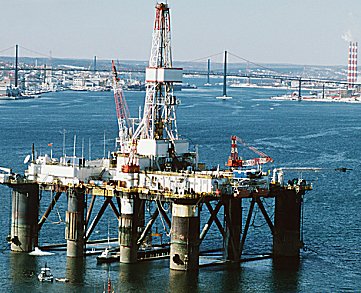Oil pumped from undersea wells contains seawater. The oil is extracted from the water until the oil-in-water concentration drops to a low, government-regulated level. The resulting water is discharged back to the sea. Facilities currently rely on methods such as ultraviolet fluorescence and infrared spectroscopy for oil-in-water monitoring.
Stephen Taylor and colleagues, University of Liverpool, UK, used membrane inlet mass spectrometry (MIMS) to detect and analyze crude oil in seawater. The system was installed on-field on the Flotta Oil Terminal, Orkney, UK. It consisted of a quadrupole mass spectrometer (QMS) connected to the capillary probe with a silicone-based membrane. The membrane blocks water and other polar molecules in a sample from entering the mass spectrometer, while allowing organic compounds such as oil to pass through for detection.
The produced mass spectra and calibration plots from the MIMS instrument showed capability to measure levels of individual hydrocarbons within crude oil in sea water. The generated mass spectra also showed ability to distinguish between different types of oil and determining concentrations of toxic hydrocarbons in oil e.g. benzene, toluene and xylene (BTX). MIMS effectively detected oil at a range of water temperatures and oil droplet sizes.
Future work will include further calibration and optimization of the existing MIMS system.
- Oil-in-Water Monitoring using Membrane Inlet Mass Spectrometry,
Boris Brkic, Neil France, Stephen Taylor,
Anal. Chem. (Just accepted Manuscript)
DOI: 10.1021/ac2008042




